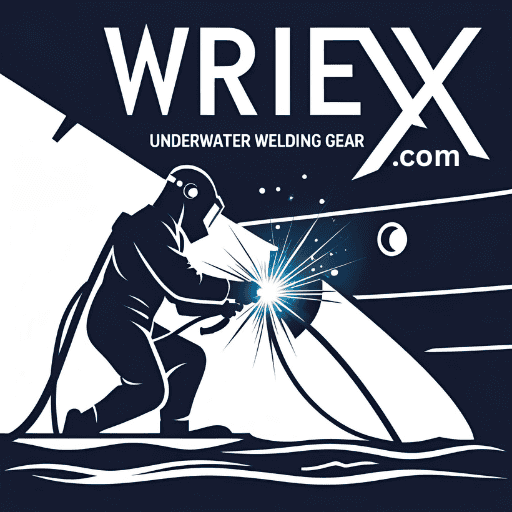Introduction to Underwater Welding
Underwater welding, also called hyperbaric welding, is the process of welding at elevated pressures, usually underwater. This powerful skill combines welding expertise with commercial diving, allowing repair, construction, and maintenance of ships, oil rigs, submarines, and pipelines.
But how did this extraordinary method of welding even begin? Who first thought of striking an arc beneath the sea?
Let’s dive into its fascinating history.
🔹 Why Underwater Welding Was Needed
Necessity is the mother of invention.
- During the early 20th century, the world relied heavily on marine transportation, oil drilling platforms, and naval forces.
- With growing industrialization and wars looming on the horizon, the need to repair large steel structures underwater became urgent.
Before underwater welding, repairs required:
- Hauling massive ships out of the water (dry dock)
- Huge time delays
- Extreme costs
So, a question arose: Can we weld metal directly underwater?
🔹 Early Attempts at Underwater Welding
Failures, Sparks, and Innovation
In the 1930s, engineers in Europe and the Soviet Union began experimenting with welding techniques below the water surface. At first, the process was failing because:
- Unstable arc underwater
- Poor visibility
- Lack of protective gear
- Risk of electrocution
But the research didn’t stop. The Soviet engineer Konstantin Khrenov is widely credited as the father of underwater welding.
🔹 First Successful Underwater Weld
Who made it happen and how?
Khrenov and his colleagues completed the first successful underwater welding in the Soviet Union in 1932. This weld was done using shielded metal arc welding (SMAW) with modifications for underwater conditions.
✅ This success laid the foundation for:
- Naval ship repair
- Submarine construction
- Pipeline maintenance
🛠 The technique used was basic but revolutionary for its time.
🔹 Development During World War II
The Turning Point
World War II (1939–1945) drastically increased the demand for underwater repairs:
- Damaged battleships needed fast welding repairs at sea.
- Ports and docks were bombed and required underwater restoration.
- Military engineers used basic underwater welding for structural support.
By WWII’s end, Allied and Axis powers had adopted underwater welding techniques in some form.
🔹 Cold War Era & Soviet Advancements
Technology meets tension
During the Cold War (1947–1991), the USSR and USA heavily invested in underwater welding for:
- Nuclear submarines
- Underwater surveillance systems
- Deep-sea oil and gas exploration
Khrenov’s early methods were refined, and dry hyperbaric welding chambers were introduced, allowing welders to work inside sealed environments below sea level.
🔹 Major Technological Milestones
Let’s have a look at some important events in the history of underwater welding:
- 1932: First successful underwater weld by Khrenov
- 1940s: Military adaptation during WWII
- 1960s: Development of dry hyperbaric welding
- 1970s: Introduction of wet welding electrodes
- 1990s: Automated welding systems began
- 2010s: Use of remotely operated vehicles (ROVs)
🔹 Wet Welding vs. Dry Welding
Two methods, one purpose
Wet Welding:
- Done directly in water
- Faster, cheaper
- Common in emergency ship repairs
- More prone to porosity and cracks
Dry Welding:
- Done in a sealed, dry hyperbaric chamber
- High-quality welds
- Used in critical operations like nuclear submarines
- Expensive and slower
📌 Modern underwater welders are trained in both methods.
🔹 Equipment & PPE — Then vs. Now
🕰 Early Days:
- Rubber suits
- Minimal electrical insulation
- Poor visibility helmets
- Basic breathing systems
🔧 Modern Gear:
- Fully insulated diving suits
- Enclosed helmets with communication
- Hot water systems to prevent freezing
- High-definition underwater cameras
- Lifeline support systems
Safety standards today are governed by ANSI, AWS D3.6M, and IMCA guidelines.
🔹 Modern-Day Underwater Welding
A respected global profession
Today, underwater welding is a specialized, high-paying trade involving:
- Offshore oil rigs
- Naval shipbuilding
- Bridge and dam maintenance
- Underwater pipelines
Modern welders use:
- Hydraulic tools
- Underwater grinders
- Waterproof electrode holders
- Custom-fitted dry suits and helmets
To become certified, welders usually complete:
- Commercial diving school
- Welding certification (AWS D3.6 or equivalent)
- CPR and emergency training
🔹 Challenges Through the Years
Underwater welding has always been risky.
Then:
- Arc instability
- Risk of drowning
- Poor weld quality
- No emergency support
Now:
- Still dangerous (the highest fatality rate in welding)
- Requires precision, experience, and safety protocols
- Risk of electric shock, explosions, and decompression sickness
But technology and training have drastically improved survival and success rates.
🔹 Future of Underwater Welding
What’s next under the sea?
- Underwater robotic welding arms
- AI-assisted inspection drones
- Smart PPE suits with built-in sensors
- VR training simulations for welders
Even remote welding from the surface using robots is being tested for deep-sea operations.
Underwater welding will get more accurate, safer, and maybe even remote-controlled as technology gets better.
🔚 Conclusion
Underwater welding began as a wartime necessity and is now a pillar of global infrastructure. From Khrenov’s first spark to robotic arms beneath the ocean, it’s a story of innovation, bravery, and evolution.
Whether you’re a beginner, a professional, or just curious, knowing the roots of this profession helps you appreciate its future.
